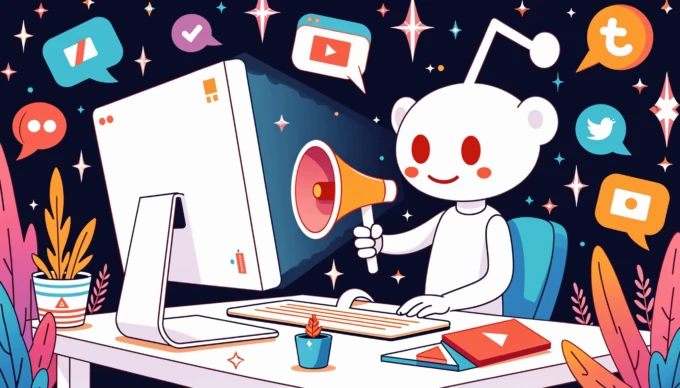Contents
Like any other business, online marketplaces also continuously look for new and improved revenue streams to boost their growth. We caught up with Marketplace optimization and growth specialist and founder of marketplaceplaybook.com, Bec Faye, to hear her take on how marketplaces can monetize their platforms efficiently.
Watch the Interview:
Transcript:
Emil: Hi, everyone, I’m here with Bec Faye, Marketplace Optimization & Growth Specialist, who is running the marketplaceplaybook.com. Bec, would you like to introduce yourself?
Bec: Hi. It’s really great to be here. As you explained, I specialize in helping marketplaces to really optimize their growth and to be able to work from the UX kind of angle and looking at conventional organization. But in amongst that, I work with a lot of different marketplaces of all different shapes, sizes and stages. I am really looking forward to have a chat today.
Emil: It’s really exciting to have you on. If you haven’t seen before, me and Bec did a webinar as well together around UX design for online marketplaces, which was really valuable. So I’m super happy to have you on board for this interview, as well, around monetization.
Bec: Really great to be back.
Emil: Awesome. Let’s jump straight into it. If we think about monetization strategies for marketplaces, there are many things that you need to consider. But if we can just start with what is monetization for marketplaces, how would you define it?
Bec: I have a couple of thoughts on monetization. I think part of it is obviously how we actually make money from a marketplace, and how do we actually create this piece of technology that’s going to fulfil its purpose. But in a way that we can actually help sustain it as a business or not for profit or whatever shape it happens to be in. But I also think it’s an interesting area where we tend to really focus in on specific trends and the way that people; we always do market monetization in marketplaces. But I think is actually really quite interesting because we see a lot of trends in people going for funding and raising all capital and everything like that. And the marketplace is very much dependent on that. But one of the things I’m really passionate about, exploring over the next two years, is really trying to figure out how do we make marketplaces profitable without necessarily relying on investment quite so much. So it’s what one of my areas of I’m quite passionate about. Sorry, but I think in a nutshell, monetization is really about how do we actually make money? How do we make sure that we’re making something that’s worthwhile that can be sustainable?
Emil: Yes and if you’re a young marketplace as well, like getting the investors on board, there needs to be some plan on how they can make their money back. If you can’t monetize your platform in a right way, then the investments are not going to happen, even to begin with. So for online marketplaces, if you look at different mindset and strategies to implement, there’s so many different alternative business models out there, like commission based selling fees and advertisement subscription. But what would you say, Bec, is important to consider when deciding on a suitable monetization strategy?
Bec: It is a really good question, I think it always comes back to no matter what stage you are in your marketplace. Really understanding the value of your core user group, the value that you’re offering to that user group, what paying for it is solving for them and what you are providing for them and then trying to really distil the value offering and that way basing our monetization around the value, the offering. So it’s going to make our job a lot easy to justify. And it’s also going to mean that people are willing to pay for that. I always say it depends on what side of the market we end up charging and the different structures that we might end up charging. But for me, it always comes back to really ensuring that where we’re providing that value and income associated, the monetization around that typically. One of the exercises I get a lot of early stage marketplaces to do to really prove that the marketplace monetization really work, is trying to create five transactions successfully without actually using the marketplace as a platform.
So to do it manually offsite, if they can create those five transactions manually. They’re saying really if you can prove that you can create these transactions without technology and means and proof, that people are willing to pay at that point in time, you get a lot of really valuable lessons along that journey that allows you to write on that monetization strategy without having to impede on the marketplace as a whole or worrying about technology and things like that. But it’s obviously for early stage marketplaces. The latest stage marketplaces, I think it’s really a matter of trying to figure out why they’re looking at monetization strategies. Is it that they’re looking to add a new revenue streams that business? And if that’s the case, then again, it’s going back to a core users. What value can we offer them? And is there an additional way that we can add revenue to help business in that way? I think we touched on it in the webinar about monetization around how tricky it can be to actually to transform an established marketplace and change that monetization strategy. But if you find ways to add new revenue streams into the business, that could be a way of kind of exploring that.
Emil: You’re right. In the recent webinar that we did around monetization in marketplaces, we spoke about mature marketplaces and well-established global players on how it can be very difficult to change that business model, instead looking at becoming more of an investor and adding revenue streams that way, as well. Just out of curiosity, like regions and geographies, does that really matter? When you look into integrating a new strategy?
Bec: I think it always does, because different regions are always going to have different intricacies about them, whether it’s the currency, whether it’s the exchange rate, whether it’s the culture in the way that that different, different aspects are conceived in that particular culture, for example. So I think it definitely comes into play. That’s where really getting to know your users easier every day, really understanding what it is that drives them, what they’re comfortable with and where they would see the value in your platform.
Emil: It is a good point. You should always look at user behaviour, but what is the user base that you are? What’s your marketplace? Who is the target audience? Who is using your platform? How are they using it? Looking to those different aspects and then you will find the different opportunities. I think you know that the premium listings like that kind of on monetization strategies really comes from that need of people who want to be able to sponsor the content, etc. and these kind of things.
Bec: Exactly. I am a true believer in that your end users are going to tell you what you need to be doing in business. If you are not listening to them, you are making a whole heap of assumptions. I always say with anybody I work with is always getting back to who your users are and listening to them because they are going to tell you the answers.
Emil: Super. If we look at monetization, it feels like things are trending from year to year, there’s a constant development in the marketplaces industry, moving from classifieds to offering more, the full payment solution and the entire offering. So my question is: what is the kind of trending monetization strategies that works in 2019?
Bec: I think, as you just touched on them, one of the big trends that we’re really seeing is the larger marketplaces, those traditional classified spaces trying to get closer and closer to the transaction in the original days and online classifieds. It was very much on listing and then a lot of that transaction happened off technology, basically, along with the real world. When now, they are again going back to that customer journey, really understanding what is that name that they’re selling for they users, for their customers.
For example, when the price of real estate they’re looking at, the original classifieds might be just selling a house. But actually, if we take a step back from that as a whole, lot of stuff that happens in amongst that, there’s things like the need to get financing. There’s the getting the phone and Internet and all of those kind of things connected. And there’s a whole bunch of other stuff that needs to happen around that part of that journey, the customer’s life. So really looking at what that journey looks like and then starting to figure out where they can add more value in, again, adding new revenue streams into that. And it’s thing that we’re seeing time and time again, every base works. Another good example as well, where a base or a trend happening with the tops of these that we use in the marketplaces that we’re using in minor places are using the platform. They realized that there was a lot of people using it for work, so then they started to explore that. And then a baby was born. And there’s another income stream for them. So to me, it felt really that everybody is coming back on this journey and really saying to depict how it’s coming. Get more. Closes the transaction. But how can we add more value as well in the long journey?
Emil: It’s really key for mainly larger mature players to really have that opportunity to both satisfy their users and users by adding these values sort of services. It could be anything from any insurances or delivery and payment solutions. But you offer that complete solution and that also gives not just increase UX, but also actually more revenue streams for yourself. So it’s a win-win in that sense to move in that direction. Out of curiosity, are there any traditional monetization strategies that doesn’t seem to work anymore or are fading out?
Bec: One of the things that probably less than the fading out, but one of the challenges that I’ve seen marketplaces really struggle with, particularly in the early stage, I work with a lot of early stage marketplaces. A lot of them are falling down the tunnel of, they’re in a low frequency marketplace and there in a low value frequency marketplace which means transactions are only happening very rarely for a user. So, for example, one user might only transact with their platform maybe once a year or every six months. That’s only about very low volume. So if you’re taking a ticket, as a percentage of the transaction, they really need a huge scale in order for that to work. And because they’re so close to the business, sometimes can be a little bit hard to see. The fact that they are charging that percentage but get the lifetime value of that customer on the average order value of that customer is so large. It’s just a really challenging space to be in and at scale is really the only option. So this is where I think that I really need to kind of recognize that that’s the case, and if the current shift that around and focus on solving a need that’s around that might actually bring in a higher frequency from that particular customer or a higher value of that transaction. It’s a matter of kind of looking to see what other income streams that can look at. What are the revenue streams can I look at? I think just being mindful of that is something definitely to be considered.
Emil: You touched on a little bit here that you work with a lot of more younger or early stage marketplaces, So I’m going to jump into another question. But feeding off of that, I assume, since you speak to a lot of young early stage companies, marketplaces that you have encountered, a couple of really disruptive sort of out of the box thinking style monetization strategies. Anything that you that you want to share.
Bec: I guess one of the real great things about working with early stage marketplaces is that we can be really inventive and really creative in how we approach monetization. I was working with a client recently, who was in a space where they were very concerned about the fact that they were kind of in the business of matchmaking almost. So they had users that were coming in from one side and the demand side. But it’s very easy for them to form relationships with a supplier, and therefore that relationship could be technically, taken off the platform. Therefore, charging a commission, for example, wasn’t gonna work for them, swinging to really take a step back and just really understand again what the customer journey was like. But really looking at the big picture of what the user was trying to achieve in their particular industry, and by taking that step backward, to identify that there was actually a big need that needed solving, which meant that we could actually really structure a sort of being narrowed in by what was done previously, were able to create more of a disruptive model that would let out that particular marketplace. To then basically bait 10 times the amount, 10 times their revenue that they were then earning from an average order value from that particular customer that was coming through the platform. Then we’re looking at a new way now to which will work out for them buying basically for a single hour. For example, they will be now purchasing bulk hours and then we’re looking into more of a membership type of opportunity which come down the track as well. So suddenly we’ve gone from being worried about the supply and the demand guy off site and platform where we’re losing the transaction to it now actually really increasing and multiplying that revenue stream. Now that’s the marketplace. So it’s kind of combining quite a few different techniques together. But by really understanding what the needs were of that user group, where I would identify this new opportunity, that would mean that we’re basically solving a problem from all angles. Sorry, that’s been really interesting, that experiment we are still running with, but so far the tests have been really positive.
Emil: It is very cool. I know that it can be a big struggle with having conversions like losing out on the actual conversion from your marketplace that you have your buyers and sellers, especially the sellers, I would assume, who are incentivized to leave the marketplace. But here is also, from a moderation standpoint, where it gets dangerous for the user as well. Because you can’t control the conversation and you can’t protect your users, the buyer in that scenario. So if the seller manages to get the conversation off the site, then the chance for a scam, etc. increases significantly. So it’s also like a way to keep protect your users in that sense as well, to be able to keep them on your platform. It’s very interesting. Another way of preventing that as well is adding, like we spoke about value-added services, as monetization strategy. And if you add enough value like OpenTable, or like an Uber, something like that, where you actually can do reservations and book. And the platform itself is so useful for the seller, that can bring down the incentive to actually leave the platform because it adds services that you need.
Bec: Exactly. That’s a really great technique.
Emil: So I think that brings us to the end of today’s interview. So thank you so much, Bec, for taking your time. It’s been really helpful. I hope and I think all the listeners are really happy to hear your tips, tricks and ideas for monetization strategies. If you want to get in touch with Bec, you can reach her on her email on bec@becfaye.com. If you want to learn more about monetization strategies, check out our webinar that we did on September 17th. And finally, if you want to learn more about content moderation and how we, at Besedo, can help you improve your content quality, and from that side of things, boost your revenue generation. Then don’t hesitate to reach out to me at emil.andersson@besedo.com. Thank you, Bec. Thank you very much. Thank you for having me. Take care, guys. Bye.
Bec: Thank you. Bye.




